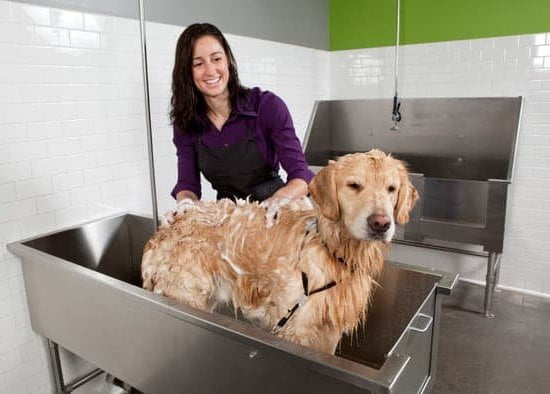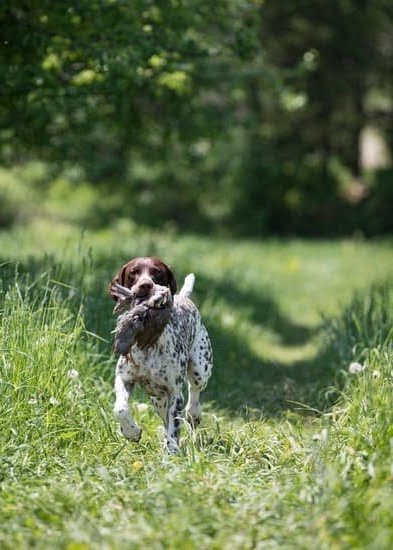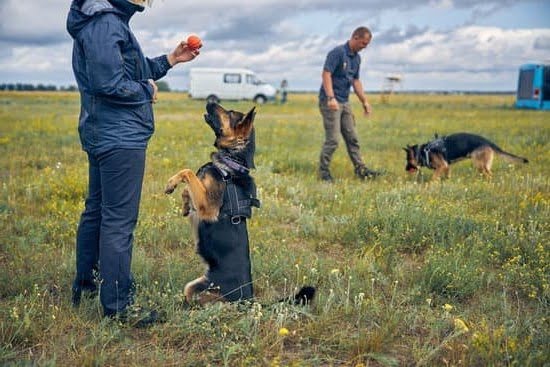Getting your dog house trained is a crucial step in ensuring a happy and healthy relationship with your furry companion. Understanding the basics of house training, including your dog’s behavior and the right training methods, is essential for a successful outcome. In this article, we will explore the key components of house training and provide you with practical tips to make the process as smooth as possible.
Understanding your dog’s behavior and body language is fundamental to effectively house training them. By recognizing their cues and signals, you can anticipate when they need to go outside and prevent accidents from happening. Additionally, setting realistic expectations for house training is important as it takes time and patience to instill new habits in your furry friend.
Choosing the right training method for your dog is also crucial for successful house training. Every dog is unique, so it’s important to tailor your approach based on their temperament and learning style. Whether you opt for crate training or paper-training, finding the best fit for your dog will set them up for success.
Throughout this article, we will discuss creating a consistent routine for your dog, using positive reinforcement techniques, dealing with setbacks and accidents, maintaining a clean environment, and avoiding common mistakes when house training. With our comprehensive guide, you’ll be equipped with the knowledge to effectively house train your dog and foster a harmonious living space for both of you.
Understanding Your Dog’s Behavior and Body Language
Body Language
Dogs communicate through body language, and understanding their cues can help in house training. Signs that your dog needs to go outside include pacing, whining, or scratching at the door. Additionally, a sudden change in behavior such as becoming anxious or restless could be a sign that they need to relieve themselves.
Understanding Your Dog’s Needs
Every dog is different, and it’s essential to understand your pet’s unique habits and behaviors. Some dogs may need to eliminate more frequently than others, while others might have specific triggers that prompt them to go potty.
Building Trust and Bonding
By paying attention to your dog’s behavior during house training, you can build trust and strengthen your bond with your pet. Learning to recognize when they need to go outside and responding promptly can help establish a positive relationship between you and your dog.
Understanding your dog’s behavior and body language is crucial for successful house training. By paying attention to their cues, getting on the same page with their needs, and building trust through bonding, you can set a solid foundation for effective house training.
Setting Realistic Expectations for House Training
Understanding Your Dog’s Abilities
Every dog is different, and their ability to learn and adapt to house training will vary. Some dogs may pick up on the routine quickly, while others may take longer. It’s important to be patient and understand that it’s a learning process for your pet.
Consistency Is Key
Consistency is crucial when it comes to house training your dog. Setting a consistent routine, using the same commands and cues, and maintaining a regular feeding schedule can help your dog understand what is expected of them. By being consistent, you’ll be setting realistic expectations for your pet and helping them learn more effectively.
Recognizing Setbacks
It’s important to recognize that setbacks are normal during the house training process. Accidents will happen, especially in the beginning stages of training. Setting realistic expectations means understanding that there will be setbacks along the way, but with patience and consistency, your dog will eventually learn to do their business outside.
By understanding your dog’s abilities, being consistent in your approach, and recognizing that setbacks are normal, you’ll be better prepared to set realistic expectations for house training your dog. Remember that every dog is unique, so it’s essential to be patient and understanding throughout the process. With time and dedication, you’ll find that setting realistic expectations will lead to successful house training for both you and your pet.
Choosing the Right Training Method for Your Dog
When it comes to house training your dog, it’s important to choose the right training method that suits both your dog’s needs and your lifestyle. There are several methods to consider, including crate training, paper training, and using a designated outdoor potty area. Each method has its own set of advantages and considerations, so it’s crucial to pick the one that aligns with your dog’s habits and your own schedule.
Crate training is an effective method for house training many dogs, especially puppies, as it takes advantage of their natural instinct not to soil their sleeping area. However, it’s important to introduce the crate properly and use positive reinforcement to make it a safe and comfortable space for your dog. On the other hand, paper training can be useful for smaller breeds or dogs who may have difficulty holding their bladders for extended periods of time.
Another popular option is designating a specific outdoor area for potty breaks. This method requires consistency and patience but can be highly effective in minimizing accidents inside the house. Whichever method you choose, remember that positive reinforcement is key in encouraging desired behaviors while house training your dog.
In addition to considering your dog’s needs and temperament when choosing a training method, it’s also important to factor in your own lifestyle and schedule. Make sure the method you select is realistic and sustainable for you in the long term. Ultimately, the right training method will help create a harmonious environment for both you and your furry friend.
| Training Method | Advantages |
|---|---|
| Crate Training | Takes advantage of natural instinct not to soil sleeping area |
| Paper Training | Useful for smaller breeds or dogs with bladder control issues |
| Designated Outdoor Area | Minimizes accidents inside the house with outdoor potty breaks |
Creating a Consistent Routine for Your Dog
One of the most important aspects of house training your dog is to establish a consistent routine. Dogs thrive on routine and predictability, so setting a schedule for feeding, bathroom breaks, and exercise will greatly help in their house training process. By providing structure and consistency, you are helping your dog understand what is expected of them and when, making it easier for them to learn where and when to do their business.
When establishing a routine for your dog, it’s crucial to take into account their age, breed, and individual needs. Puppies, for example, have smaller bladders and higher energy levels compared to adult dogs, which means they will need more frequent potty breaks and playtime. Older dogs may have different bathroom needs as well. By understanding your dog’s specific requirements, you can tailor a routine that best suits them.
A typical daily routine for house training a dog could include feeding at the same times every day, followed by immediate outdoor bathroom breaks. After meals and play sessions, it’s important to take your dog outside again to reinforce good bathroom habits.
Consistency in timing gives your dog an idea of when to expect certain activities, making it easier for them to anticipate when they need to go out. Overall, maintaining a consistent routine not only aids in house training but also contributes to your dog’s overall well-being.
| House Training Routine | Description |
|---|---|
| Feeding Schedule | Set specific times for feeding each day to regulate bathroom habits. |
| Bathroom Breaks | Taking the dog outside immediately after meals and playtime reinforces good bathroom habits. |
| Playtime/Exercise | Including regular exercise in the routine helps maintain physical health as well as regulate energy levels. |
Using Positive Reinforcement Techniques for House Training
Positive reinforcement is a key aspect of effectively house training your dog. By using positive reinforcement techniques, you can encourage desired behaviors and create a positive association with the house training process for your furry friend. Here are some effective positive reinforcement techniques to consider:
- Use treats: Reward your dog with small, tasty treats when they successfully eliminate in the designated potty area. This will reinforce the behavior and make them more likely to repeat it in the future.
- Offer praise: Verbal praise and affectionate petting can go a long way in reinforcing good behavior during house training. Make sure to use an upbeat, positive tone to communicate your approval to your dog.
- Utilize clicker training: Clicker training can be a useful tool for house training, as the distinct clicking sound can signal to your dog that they have performed the desired behavior, followed by a treat or praise as a reward.
It’s important to be consistent in using positive reinforcement techniques during the house training process. Dogs respond well to clear, consistent feedback, so make sure to reward them every time they exhibit the desired potty behavior.
Remember that patience is key when using positive reinforcement techniques for house training. It may take some time for your dog to fully understand what is expected of them, so be patient and continue to provide positive reinforcement as they progress towards successful house training.
Dealing With Setbacks and Accidents
House training your dog can be a challenging process, and setbacks and accidents are bound to happen along the way. It’s important to remember that these mishaps are a normal part of the house training journey, and how you handle them can have a big impact on your dog’s progress. Here are some tips for dealing with setbacks and accidents during the house training process:
1. Stay calm and patient: When accidents happen, it’s important to remain calm and patient. Yelling at or punishing your dog for an accident will only cause fear and anxiety, which can make it harder for them to understand the house training process.
2. Clean accidents promptly: Accidents should be cleaned promptly and thoroughly to remove any lingering odors that may attract your dog back to the same spot. Use a pet-friendly cleaner to ensure that all traces of the accident are properly removed.
3. Reassess your routine: If you find that accidents are happening consistently in the same place or at the same time of day, it may be necessary to reassess your routine. Make sure that you are taking your dog out frequently enough, especially after meals, playtime, and naps.
It’s important to remember that setbacks and accidents are a normal part of house training, and staying consistent with your approach will help your dog eventually understand what is expected of them in their new environment. Remember to praise and reward positive behavior, as this will reinforce good habits as you continue with the house training process.
Remember that every dog is different, so while one method may work well for one dog, another method may work best for another. Patience, persistence, and consistency will ultimately lead to success in house training your furry friend.
Maintaining a Clean and Healthy Environment for Your Dog
First and foremost, regular cleaning and sanitation of your dog’s living space is crucial. This includes frequent vacuuming or sweeping to remove pet hair, dirt, and dander. Additionally, washing your dog’s bedding and toys on a regular basis will help prevent the buildup of bacteria and allergens. Using pet-safe cleaning products to disinfect floors, walls, and other surfaces that your dog comes into contact with is also important in maintaining a hygienic environment.
Another aspect of maintaining a healthy environment for your dog is ensuring that they have access to fresh water at all times. Hydration is key to their overall health, so regularly refilling their water bowl throughout the day is essential. Moreover, providing a balanced diet that meets your dog’s nutritional needs will contribute to their well-being and reduce the risk of digestive issues that could lead to accidents in the house.
Lastly, regular grooming and hygiene practices such as brushing your dog’s coat, trimming their nails, and cleaning their ears and teeth will not only keep them looking tidy but also prevent health issues such as infections or discomfort. By prioritizing cleanliness and hygiene in your dog’s environment, you are not only promoting their physical well-being but also supporting successful house training efforts.
Common Mistakes to Avoid When House Training Your Dog
When house training your dog, there are common mistakes that owners often make that can hinder the process. One of the most common mistakes is not being consistent with the routine. Dogs thrive on routine, so it’s important to take them out at the same times every day, feed them at the same times, and provide ample opportunities for bathroom breaks. Inconsistency can confuse your dog and make it harder for them to understand what is expected of them.
Another mistake to avoid is punishing your dog for accidents in the house. Accidents are a natural part of the house training process, especially with younger dogs or rescue dogs who may not have been properly trained before. Punishing your dog for accidents can create fear and anxiety around eliminating, making it more difficult for them to learn where they should go.
Additionally, using pee pads or indoor potty options can prolong the house training process. While these options may seem like a convenient solution, they can send mixed signals to your dog about where it’s appropriate to eliminate. It’s best to focus on teaching your dog to go outside from the beginning, rather than relying on indoor options that may confuse them.
By avoiding these common mistakes and staying consistent with your training approach, you can set your dog up for success in their house training journey. Remember to be patient and understanding as you work with your furry friend through this important developmental stage.
Conclusion and Recap of Key House Training Tips
In conclusion, house training your dog requires patience, consistency, and understanding of your pet’s behavior. By paying attention to their body language and setting realistic expectations, you can choose the right training method for your dog and create a consistent routine. Utilizing positive reinforcement techniques will encourage good behavior, while also being prepared to deal with setbacks and accidents during the process.
Maintaining a clean and healthy environment for your dog is essential in house training, as well as avoiding common mistakes such as punishment or not being consistent with the routine. Remember that every dog is different, so it’s important to be patient and adjust the training method according to your pet’s needs.
By following these key house training tips, you can create a harmonious and stress-free living environment for both you and your beloved furry friend. With time, effort, and understanding, you can successfully house train your dog and enjoy a happy and well-behaved companion for years to come.
Frequently Asked Questions
How Do You Stop a Dog From Peeing and Pooping in the House?
To stop a dog from peeing and pooping in the house, it’s important to establish a consistent routine for bathroom breaks. Take your dog outside frequently, especially after meals and naps, and praise them when they go potty outside.
Supervise them indoors and interrupt any accidents with a firm “no” or clap to startle them, then immediately take them outside. Clean any indoor accidents thoroughly to eliminate lingering odors that may attract the dog back to the same spot.
How Do You Start Potty Training a Dog?
Potty training a dog begins with creating a designated bathroom area outdoors. Take your dog to this spot consistently, especially after they wake up, eat, or drink. Use a verbal cue like “go potty” to associate with the act of eliminating waste.
It’s important to reward your dog with treats and praise when they go potty in the designated area. Be patient and consistent with the training process.
How Long Until a Dog Is House Trained?
The time it takes for a dog to become fully house trained can vary depending on breed, age, and individual temperament of the dog. On average, most dogs can be fully house trained within 4-6 months if consistent training methods are used.
However, some dogs may take longer to grasp the concept of where it’s appropriate to eliminate waste indoors versus outdoors. Continual positive reinforcement and patience are key factors in successfully house training a dog.

Welcome to the blog! I am a professional dog trainer and have been working with dogs for many years. In this blog, I will be discussing various topics related to dog training, including tips, tricks, and advice. I hope you find this information helpful and informative. Thanks for reading!





